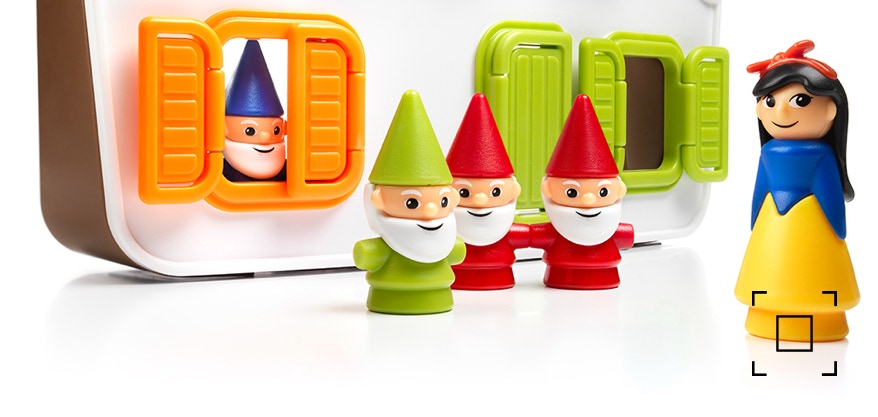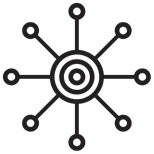
Snowwhite deluxe
The story behind the creation of Snowwhite
Raf Peeters, January 2017
After a successful introduction of 3 Little Piggies (2015) and Little Red Riding Hood (2016) I was asked to design a third preschool puzzle game, based on a well known fairy tale. As mentioned before, the number of fairy tales that are known worldwide and that are suitable for turning into a puzzle game, is quite limited. So in 2016 I faced the similar problem as the previous year.
HEIGH-HO
I didn’t want to use a traditional game board in this new game to avoid any similarities with the existing games. Although Three Little Piggies is a very different kind of puzzle game than Little Red Riding Hood, some consumers see them as two similar ones. Probably because they both use tiles on a horizontal game board and use playing figures like a wolf and houses. I also wanted to use a different kind of puzzle concept. Not a packing problem or a connection game this time but a logic game. The logic needed to be very simple, so that it is understandable by young children.
I choose to use Snow White for the fairy tale because it included some elements that I found visually interesting: 7 dwarves, all with the same shape, but only in a different color. This time I could not use the story as a basis for the game rules. Because what is Snow White really “doing” in the story, except for getting (almost) killed? That’s why I focussed more on the house and the dwarves than on Snow White. When I started working on this game the idea was that the dwarves always want to know where in the house Snow White is to prevent the evil stepmother from doing any harm. Big Brother is watching, or better seven little ones are ;-)
The first version was the ground plan of a house divided into different chambers of different sizes and shapes. The problem with this concept was that it didn’t look right. A house without a roof looks more like a ruin. And the opposite, a house with a roof, would make it physical impossible to manipulate the figurines (unless you remove the roof first). For that reason I changed the shape of the house. Instead of having a horizontal game board, you get a vertical one, with rooms on different floors of the house. There is a blue room on the second floor with 4 places, a green room with with 3 places and an orange one with 2 places. The ladder is only added to clearly divide both rooms on the ground floor. And without a ladder, little children would probably wonder how the figurines can go the the second floor. Originally the game was intended to be played only on the interior of the house. Each room would have its own background color to distinguish it in the instructions of the challenges. But I was reluctant to use cardboard or a sticker to create this interior background, because it felt cheap. So I started adding windows in a specific color to indicate the color of the room.
The nice thing about windows is that they can be opened and shut. This suddenly created a different option for the game play: now the game could also be played on the exterior. For many years I wanted to do something with window blinds and this was a perfect opportunity. Some figurines are attached to each other (the red and blue dwarves). On an abstract level this creates two kind of playing figurines: the singles and the twins. The twins have more limitations, because they alway occupy to places next to each other.
When the game was almost finalized, my colleagues suddenly wanted me to add the figurine of a witch to the game. It is a nice addition to have the bad character. Especially because children will not only use this game to solve the challenges, but also to play with the figurines inside the house. But from the point of view of the fairy tale, it makes of course less sense. You don’t expect the witch to be on the second floor of the house and especially not when all dwarves are home. Because of this new figurine, this game will be introduced later in spring 2017. All challenges, pictures and artwork needed to be made all over again, so we couldn’t finalize everything in time.
This game also features a story book, illustrated again by my colleague Hans. We managed to include the wolf somewhere in the story book too, although there is of course no figurine of the wolf in the game.
A fun twist to the dwarves is that they can be stacked. This is not necessary when you solve the challenge, but I always like to add extra options for playing, especially when a game is intended for young children. Similar to the other fairy tale games, many children will also use the house and figurines for pretend play. They can replay the original story (from the picture book) or create their own. This way the game also becomes open-ended.
UPDATE 2018
Because of difficulties during production, we adjusted the construction of the house in 2018. It now has colored floors. This improved version is not only easier (and more expensive) to fabricate, but also has the benefit that it makes it handier to manipulate the figurines. And the colored floors look better and makes the concept of different floors clearer.
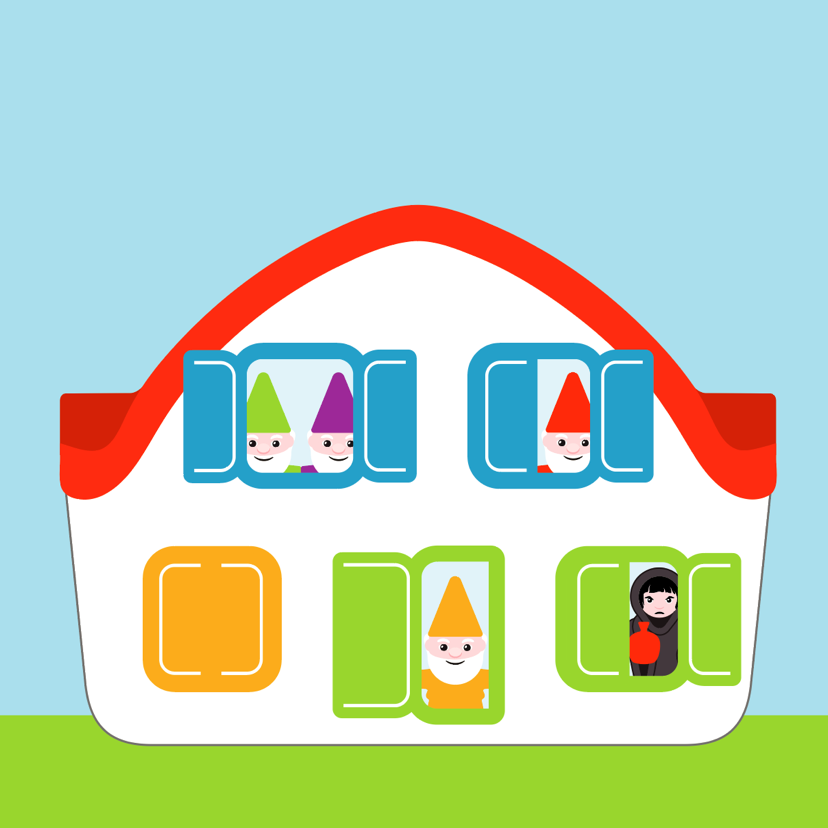
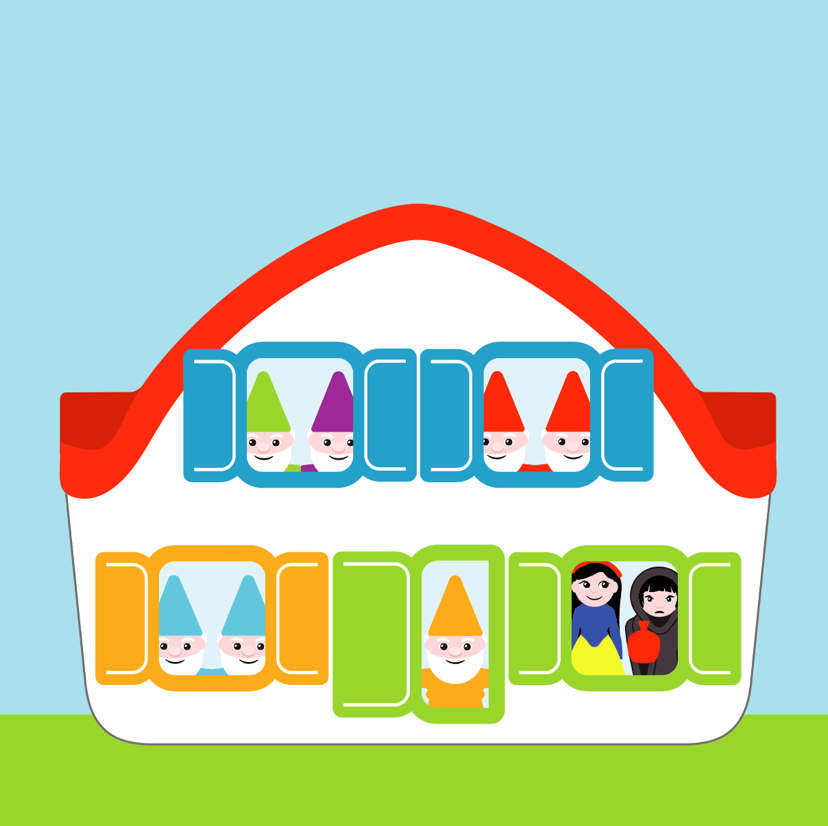
example of a starter EXTERIOR challenge/solution of Snow White
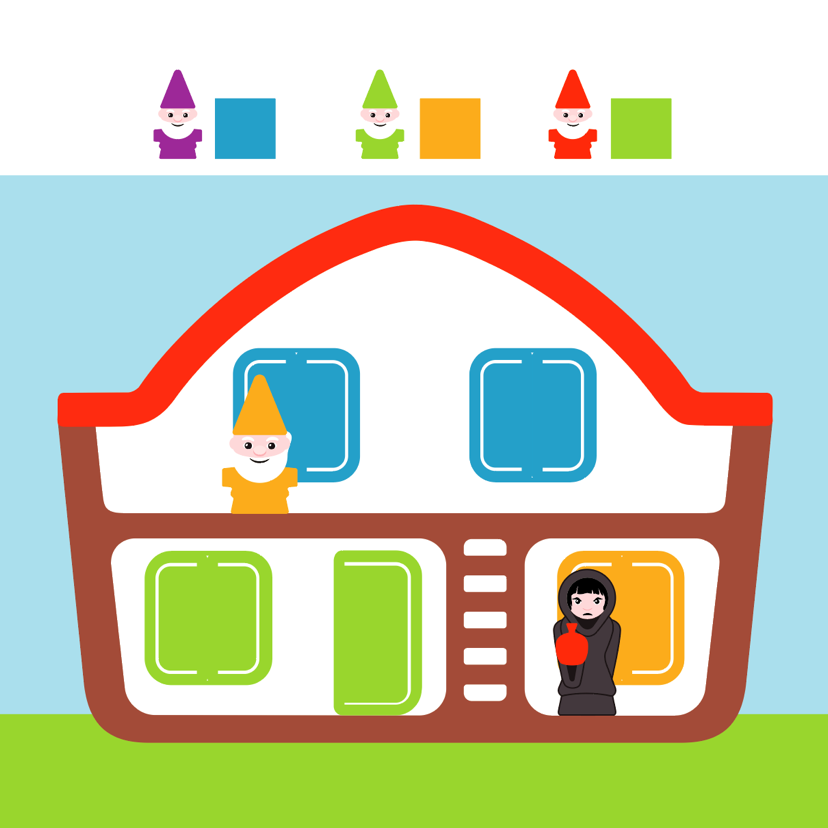
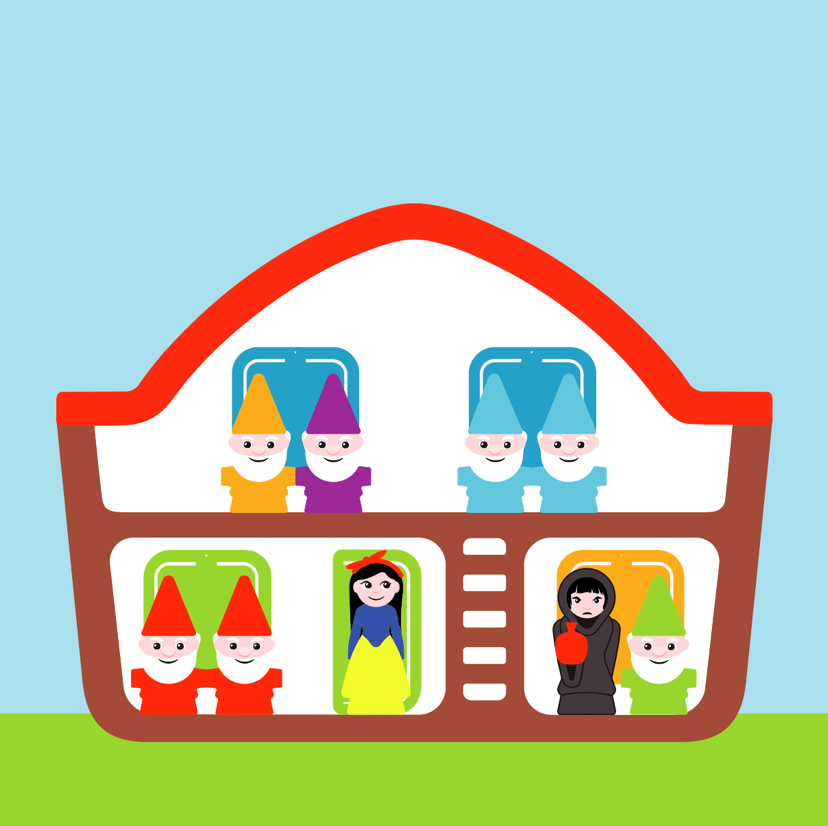
example of a junior INTERIOR challenge/solution of Snow White
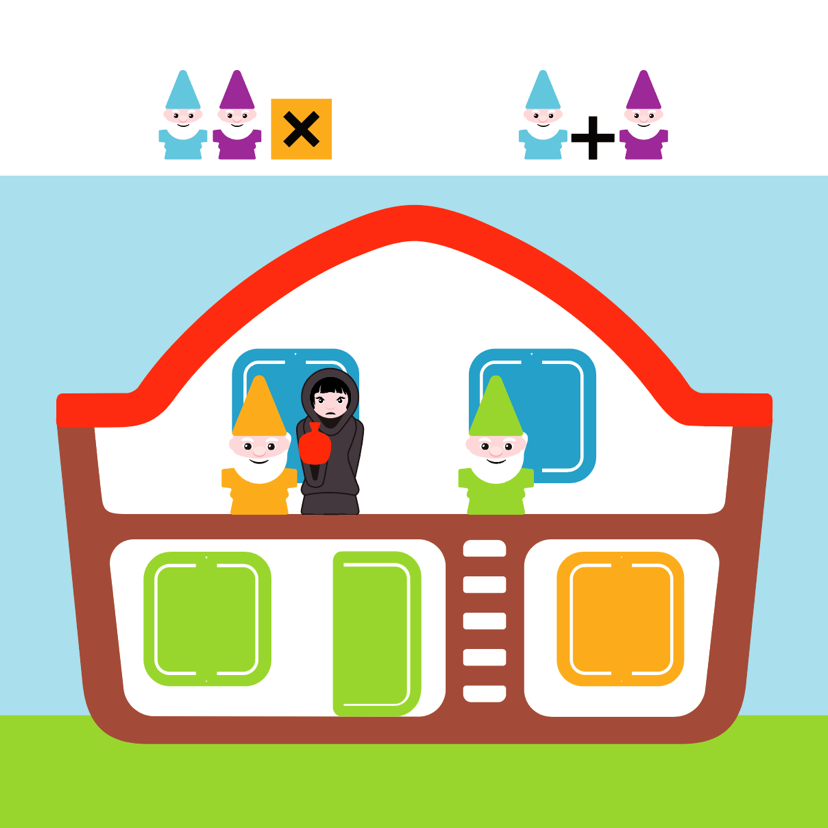
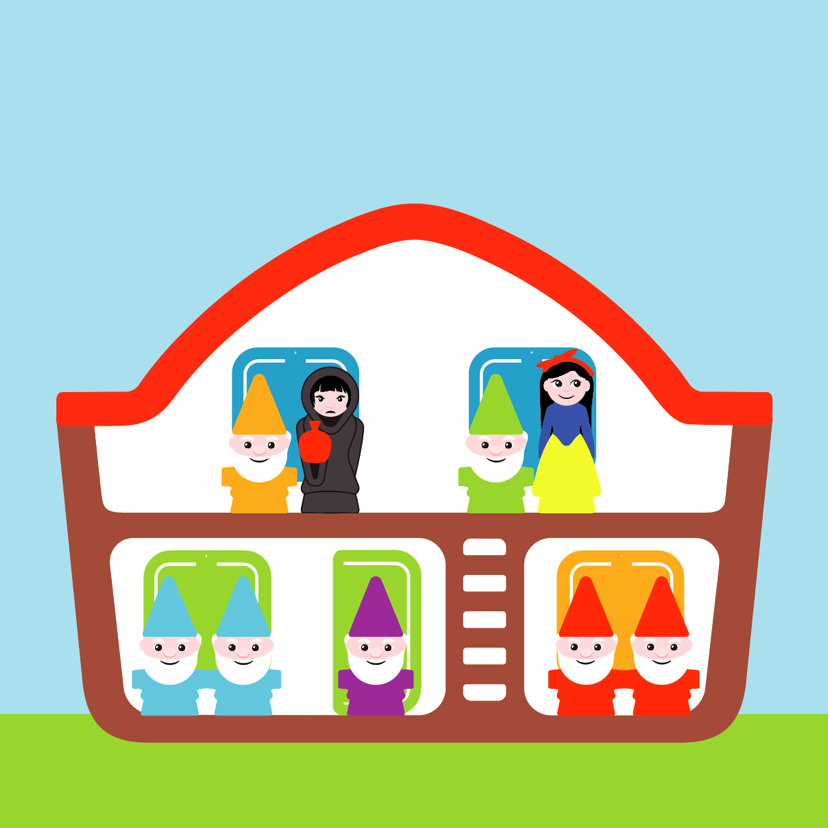
example of a master INTERIOR challenge/solution of Snow White
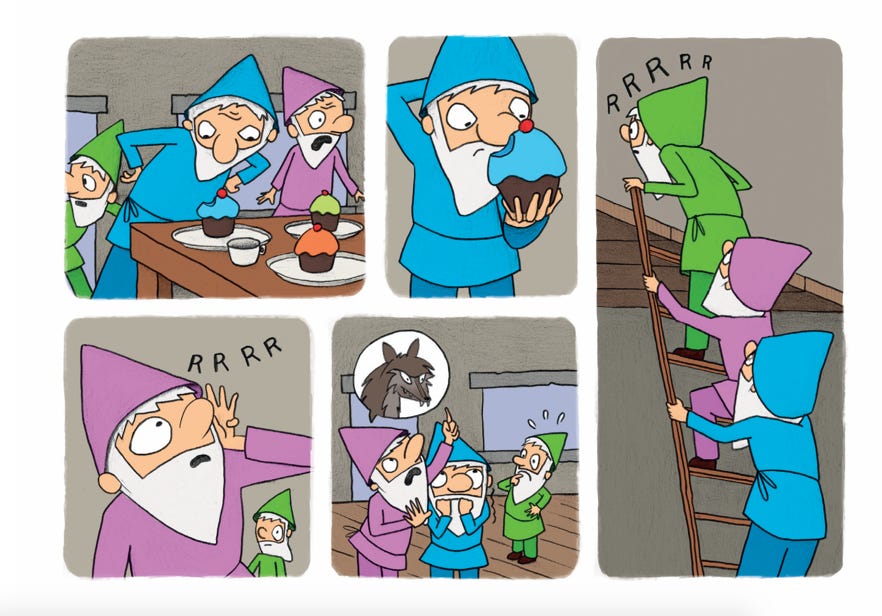
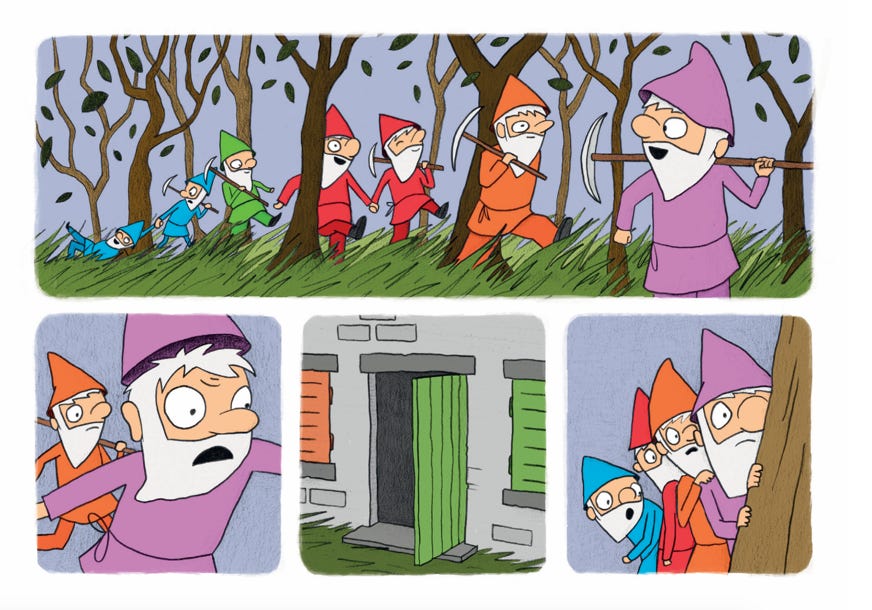
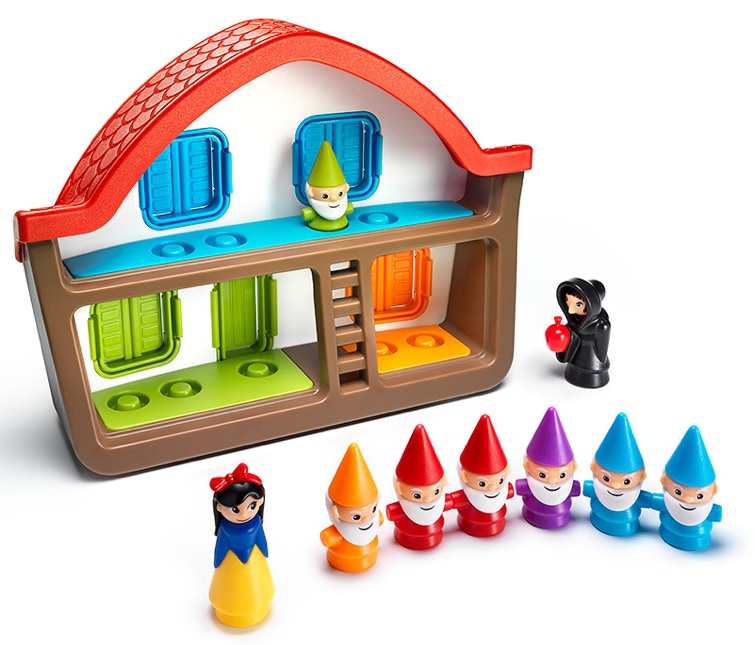
GAME RULES SNOW WHITE
Snow White offers two kinds of challenges in the included booklet: 24 challenges that show the interior of the house, and 24 challenges that show the exterior. Before you start playing, make sure you position the house with the side facing you as indicated in your challenge.
1) Choose a challenge. Close the door and all window blinds in the interior challenges; close specific ones as indicated in exterior challenges. Place characters inside the house as shown in the challenge.
2) Determine the correct position of all other characters in the house based on the clues provided in the challenge:
• All characters must be placed inside the house.
• Twin dwarves (blue and red) will always occupy 2 places adjacent to each other. For that reason they can never be placed in front of the door.
3) There is only 1 possible solution. The solution is shown on the backside of each challenge.
SYMBOLS
The JUNIOR, EXPERT and MASTER levels include extra rules about the correct position of the characters, using these symbols (at the top of the page):
• A colored square indicates that a character must be placed in the room of that color (it can be any of the places in that room). The house has 3 rooms:
• The blue room with 4 places - this room comprises the full upstairs level of the house
• The green room downstairs with 3 places (2 behind the window, 1 behind the door)
• The orange room downstairs with 2 places
• A colored square which is crossed out indicates that a character can NOT be in the room with that color.
• A “plus” symbol between characters indicates that these characters must be placed in the same room. They don’t need to be adjacent to each other or in a specific order.
HINTS FOR PARENTS AND TEACHERS
Start with the challenges that show the interior of the house. The challenges that show the exterior can be more difficult for children, as unseen spaces behind closed window blinds and the door need to be perceived.
Children will need guidance when they start playing the game. Don’t solve the challenges yourself, but rather ask questions like:
• What do you think this symbol means?
• Where do you think the green dwarf needs to be placed?
Website ©2017 Raf Peeters
Products and images: © Smart
